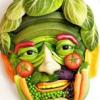Unfortunately it is impossible to avoid all food contamination, but there are certain techniques that are shown to work in reducing your consumption of toxic chemicals. Many chemicals have been released into our environment in the last 100 years. Persistent bioaccumulative and toxic chemicals (PBTs) such as dioxins have been introduced into the environment after WWII.
These PBTs are extremely dangerous. They have been confirmed as carcinogens and endocrine-disruptors (they alter hormonal function and balances). Dioxin exposure is what is believed to cause the near extinction of the bald-eagle. Studies have consistently shown that the main source of exposure to these PBTs is through the consumption of animal-fats [1].
PBTs are extremely fat-soluble; they are highly attracted to fat. So when pesticides are sprayed on the grass or grain that the animal is eating, these PBTs are taken in on the grain and accumulate in the fat of the animal. Humans then eat the animal that has accumulated all these PBTs in its fat, and now after you eat the animal, all the PBTs are accumulated into your body-fat.
Grains and produce do contain pesticides and PBTs, but they are much less concentrated in them than foods higher on the food chain due to a phenomena known as biomagnification. The food at the top of the food chain is milk. Both human breast milk and cow milk are rich sources of PBTs.
Of all the foods contaminated: fish is the worst offender. Not only is fish the number sources of dioxins but also high levels of heavy-metals and radioactive particles. Predator fish (like tuna, halibut, bass, and shark) are the ones most concentrated in these toxins because they eat other fish that have also concentrated these chemicals in their body. Unfortunately the seas and oceans have become extremely polluted and simply put, all of this pollution collects in the fat of the fish.
So to avoid PBTs it is imperative to eat low on the food-chain, vegetarian and vegan diets, which are naturally low on the food-chain are much less concentrated in these PBTs [2]. And if you want to take an extra step and avoid even more exposure, eat low on the food-chain and eat organic.

[1] http://www.epa.gov/p...ubs/dioxins.htm
[2] Chemosphere. 1997 Mar-Apr;34(5-7):1437-47. Levels of dioxins, dibenzofurans, PCB and DDE congeners in pooled food samples collected in 1995 at supermarkets across the United States. Schecter A, Cramer P, Boggess K.




















































